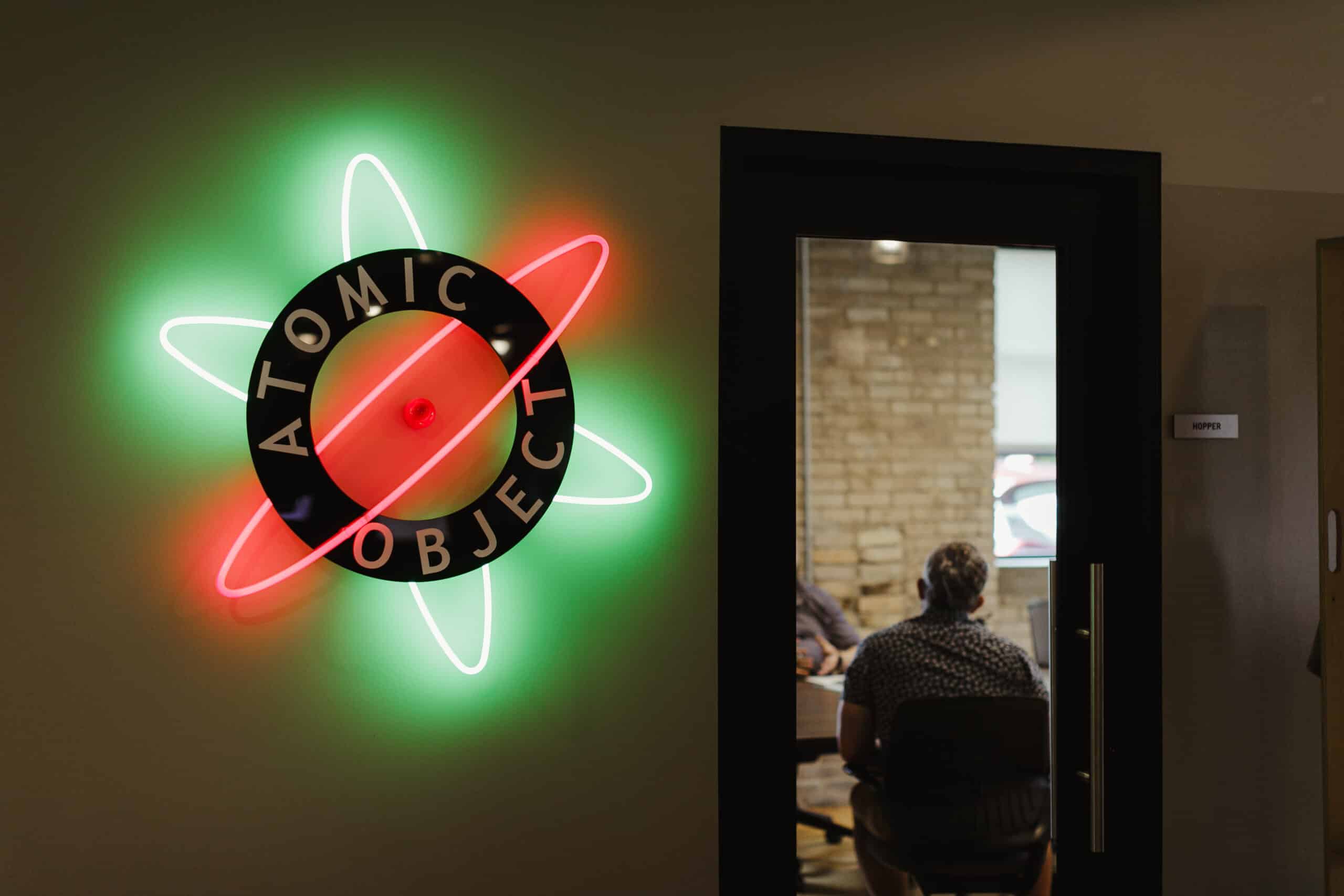Generative AI has quickly become competitive table stakes. Asking if or when to adopt it is like asking if you needed a website back in 1996. Your organization is falling behind if you are not setting the stage for experimentation and actively adopting generative AI tools.
There has been mass generative AI adoption since OpenIA’s public launch of ChatGPT in November of 2022. Organizations have been exploring generative AI tools and putting them to use in both operations and product features. Examples include tools to generate or copy-edit marketing content or the meeting summarization feature from Zoom’s AI Companion.
Accordingly, we’ve been actively experimenting with generative AI tools throughout Atomic Object. Additionally, we are receiving many customer inquiries about integrating generative AI technology into their operations and product offerings.
Competitive Parity in Operations
Generative AI in operations will provide a short-lived competitive advantage but is already becoming table stakes for market leaders. Adoption of generative AI tools will provide a near-term cost advantage but this cost advantage is accessible to everyone. That’s because the ease and cost of adopting generative AI is relatively very low compared to historical technology disruptions.
Generative AI services are readily available and offer easy integration with existing operational workflows:
- People can easily integrate direct prompt tool usage into their creative process.
- No-code/low-code and cloud-based automation platforms like make.com can provide the next level of automation over manual processes.
- Business software like Google Sheets is integrating generative AI features into their apps to provide additional productivity on top of their existing API accessibility and scripting capabilities.
- Operations IT or AppDev teams can use generative AI APIs directly in custom operational software.
Organizations don’t need to employ software developers or specialized machine learning engineers to deploy generative AI tools into their operations. Giving tech-literate individual workers permission to experiment and adopt generative AI tools is enough to move forward.
Important points to consider include:
- Mistakes will be made, so carefully consider how the technology will be used, how to mitigate the risk of mistakes, and the cost to remedy a mistake.
- Generative AI technology will continue to improve and new tools will continually be developed. This means upfront costs will be low due to ease of adoption, but you’ll likely have a low-cost, ongoing continuous improvement effort.
Competitive Parity in Software Products
The real innovation and value creation from generative AI is generative AI itself. It will be a mixed bag as to whether generative AI will create a sustainable competitive advantage for companies integrating the technology into their software products.
Some products with existing competitive advantage through differentiation may use generative AI to strengthen their differentiation. The sustained advantage will come from the creative integration of generative AI features with existing capabilities.
I expect generative AI features in most software products may create a temporary advantage that quickly diminishes. The AI features will become baseline expectations by customers. The ease of integrating generative AI features through APIs into custom software will be like integrating Google Maps or text services like Twilio into a custom application.
Companies creating custom software products don’t need to employ specialized machine learning engineers to integrate generative AI features into their products. The AI product companies have those engineers and are putting AI feature integration on a tee for generalist software developers to crush (that’s part of the business model behind the platforms).
Important points to consider include:
- Where can generative AI features create an enhanced value proposition for my customers and what’s the priority for deploying those features?
- Similarly to generative AI integrations in operations, product integrations should be done thoughtfully with the anticipation of future change. Some generative AI services will fail or change. That means software products using those services will need to change too. The cost of change is worth it because it is ridiculously lower relative to developing custom generative AI technology in-house.
- How is my software development team using generative AI for productivity in the creation of our custom software products?
Generative AI Adoption Change Management
The need and immediacy for change is clear. The high-level considerations are easy to ask. But change and technology adoption always come with friction and many details to work through.
However, working with an intentional change management framework can help speed and smooth AI adoption. We’ve found success using both (sometimes using these models in conjunction with one another):
- John Kotter’s 8 Steps for Leading Change
- The framework from Crucial Influence
We’ve been helping our customers through all of the detailed considerations from strategy to deployment of AI technology.
Mike’s framework for leveraging AI in your business is a helpful guide.
We are also going through our own phase of experimentation and change with generative AI tools. We will continue to share our journey and experiences.
Please don’t hesitate to contact us with your questions about generative AI. Our managing partners and technical leaders are always happy to give a few hours to provide feedback, resources, and recommendations.

